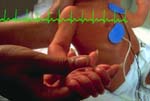An organizational decision to stockpile antiviral medication and then acquiring anti-virals is the simplest part of a plan. The protocol associated with securing, transporting, screening and eventually dispensing the antivirals is another matter altogether. I wonder if you would be so kind as to comment on some of the antiviral initiatives that you are seeing and give your personal opinion on the use of antivirals as prophylaxis.
There are several issues to consider when dealing with antivirals and pandemic flu. The first deals with the dose, regimen and efficacy of antiviral treatments for pandemic flu. Experience with antiviral regimens against H5:N1 influenza in South East Asia has shown that even with the best healthcare professionals in attendance and the greatest minds guiding care, the usual dose of antiviral medication must be doubled and that the length of time required for treatment is twice as long. Further, the past several months has demonstrated a disturbing trend towards the need for the use of both drugs at this four fold increased regimen. This set of facts alone means that a company planning to stockpile must now plan on four times as much of each drug for each person to be treated.
The second issue deals with obtaining sufficient quantities of both drugs to provide effective treatment. Based on standard doses, experts and governments agree there are insufficient supplies of antivirals available to treat just those in healthcare critical infrastructure and national critical infrastructure roles. The four-fold increase in dose and the need for duel drug therapy effectively reduces supplied eight-fold.
The third issue deals with the ineffectiveness of prophylaxis and the risk of creating resistance to the few drugs we have now. While drug prophylaxis has a certain theoretical appeal, it has not been shown to be effective for influenza. Worse, constant exposure of the disease to low doses of the antivirals increases the likelihood of mutation resulting in resistance to the antiviral drugs. Finally, any drug used for prophylaxis is taken out of the total supply, thus reducing the amount of drug available for treatment. Given that at worst, only one in three people exposed to the disease actually falls ill, giving prophylaxis to everyone means using three times more drug than needed, or running out of drug three times sooner.
The fourth issue deals with the ethics of superseding national needs regarding critical healthcare infrastructure support and national critical infrastructure support. Given a limited worldwide supply of antivirals, such redirection of drug means that some segment of critical infrastructure will be denied treatment.
In short, the decision to stockpile medications is ill-conceived, impractical and quite possibly unethical. Prophylaxis is perhaps the only decision that would be worse.










